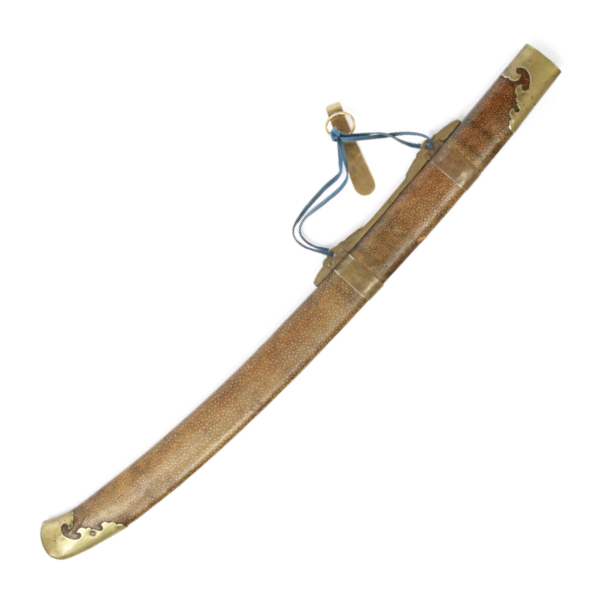
Dāoqiào (刀鞘)
Qing Chinese for "saber scabbard".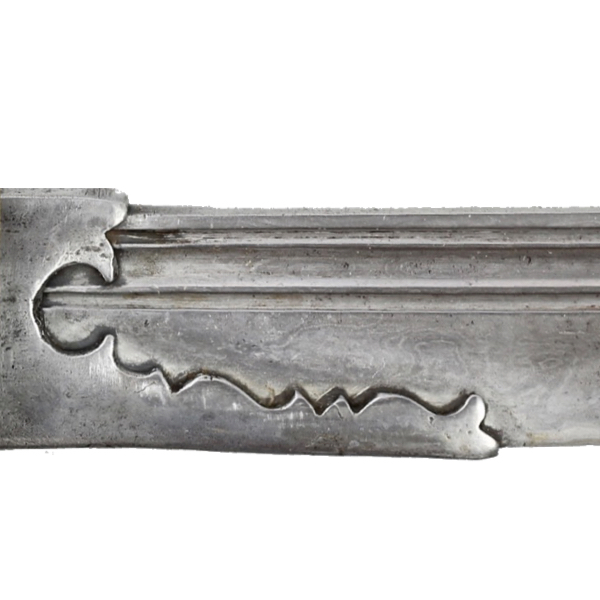
Ulhun
Manchu for tūnkǒu (吞口), a collar piece on the base of a sword or saber blade.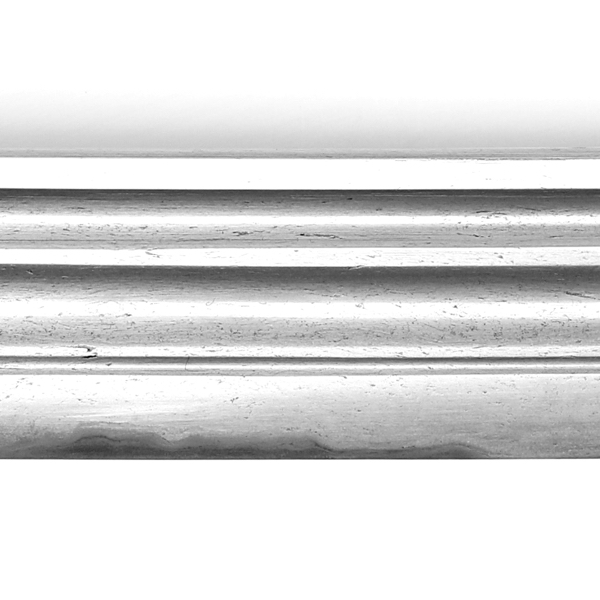
Kuhen
Machu for a groove on a blade or arrowhead
Dāo cáo (刀槽)
Qing Chinese for a groove in a saber blade.
Dāo tūnkǒu (刀吞口)
Qing Chinese term for the collar-piece found on some Chinese sabers.
Hùshǒu pán (護手盤)
Qing Chinese word for a disc guard.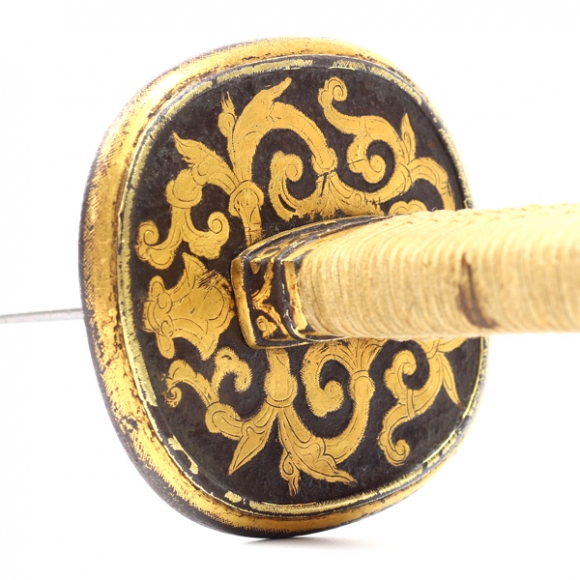
Dāo hūshǒu (刀護手)
Qing Chinese for "saber guard".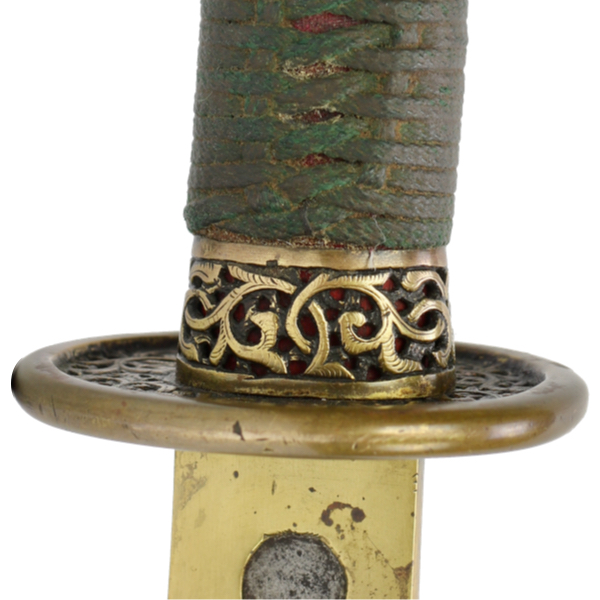
Bǎgū (靶箍)
Qing Chinese for the ferrule of a sword hilt.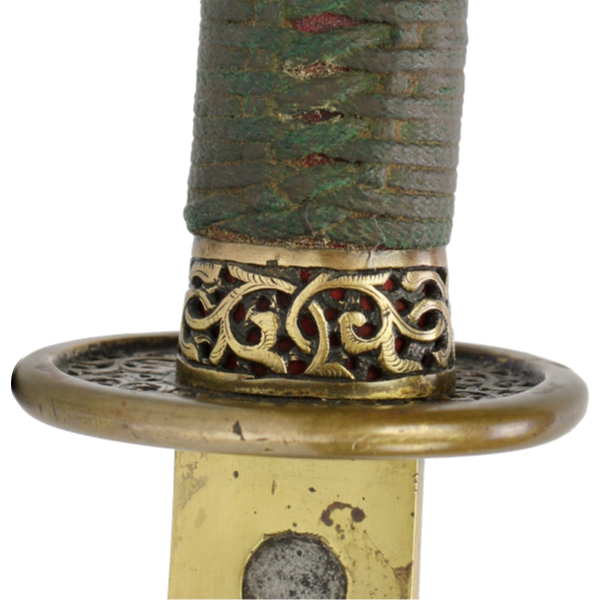
Dāobǎ shù (刀把束)
Qing Chinese for the ferrule of a saber hilt.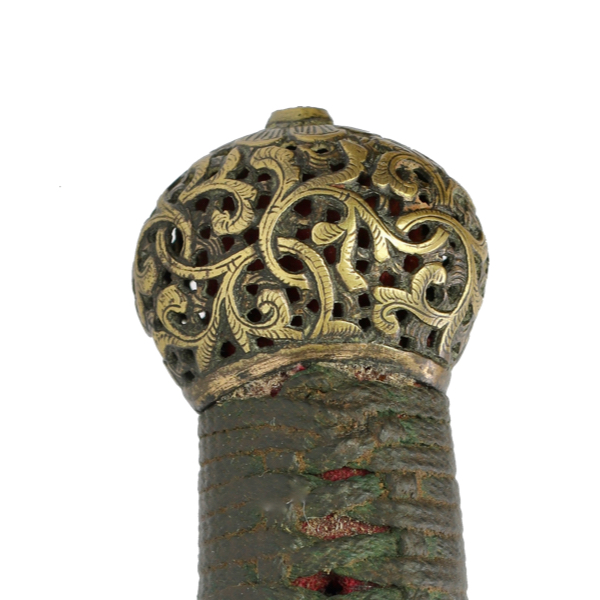
Dāobǎ dǐngshù (刀把頂束)
Qing Chinese for "saber pommel".
Dāobǎ (刀把 / 刀把)
Qing Chinese for "saber grip".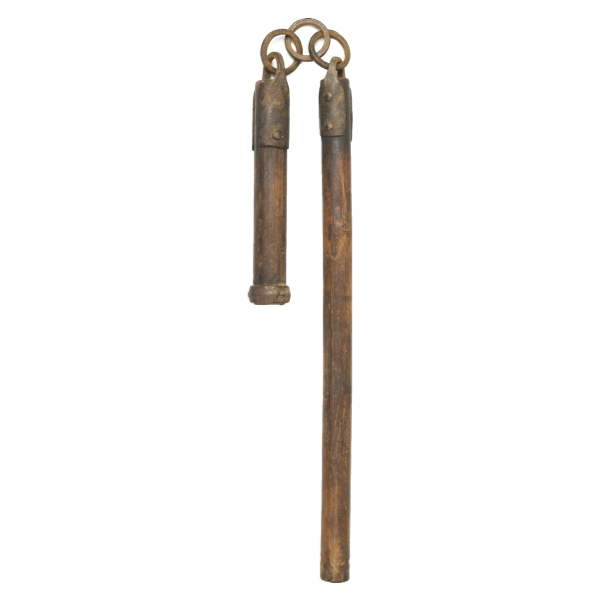
Liánjiābàng (連耞棒)
A Chinese type of fighting flail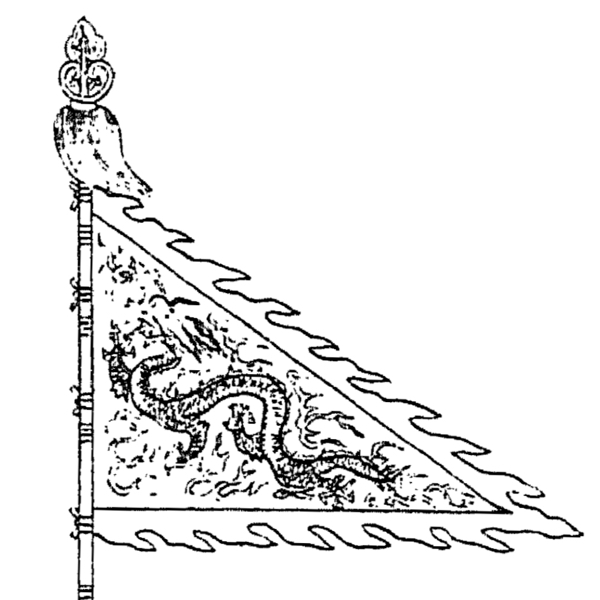
Hànjūn (漢軍)
A hereditary Chinese warrior class who served the Qing under the Chinese Eight Banners.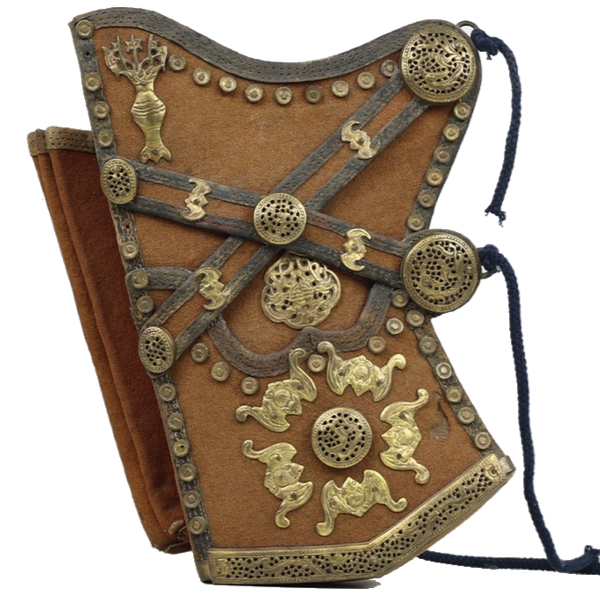
Sādài (撒袋)
Chinese name for the Manchu style quiver.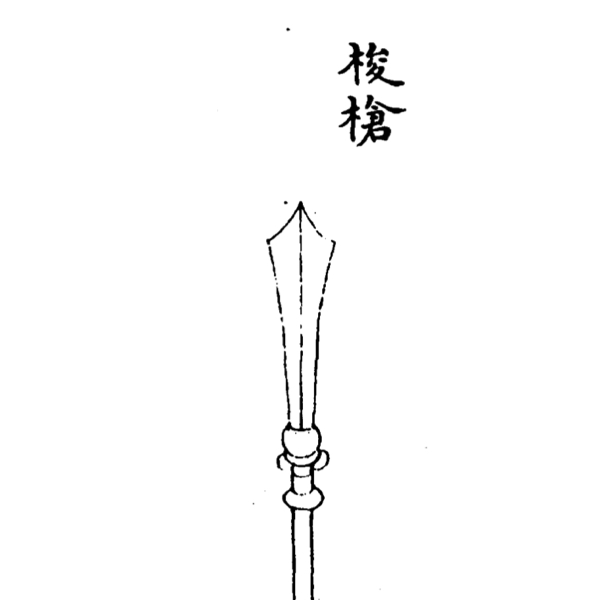
Suōbiāo (梭鏢)
A Chinese type of javelin.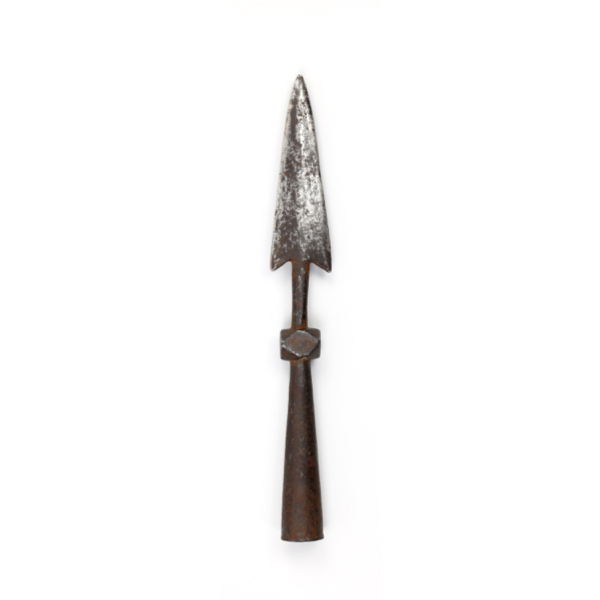
Biāo (鏢)
A Chinese javelin.
17th century armored vest
An extremely rare sleeveless vest from the Ming-Qing transition period.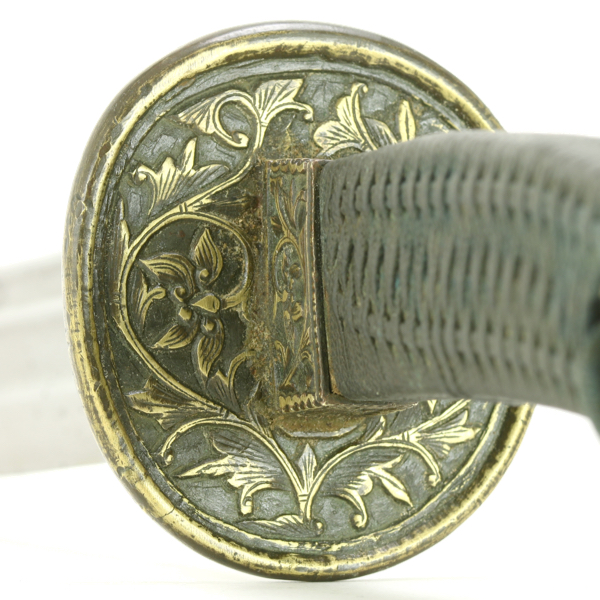
Fangshi officer's saber
With a good blade and a set of fittings that exceed the quality of most of this period.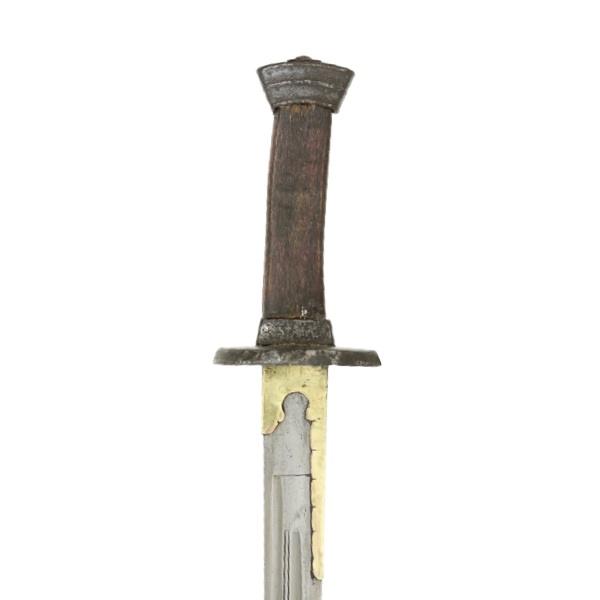
Early yútóudāo
With influences from several cultures that are rarely seen on a single blade.
Eight Banners
Administrative divisions under which all Manchu households were placed during the Qing dynasty.
Bāqí (八旗)
Administrative divisions under which all Manchu households were placed during the Qing dynasty.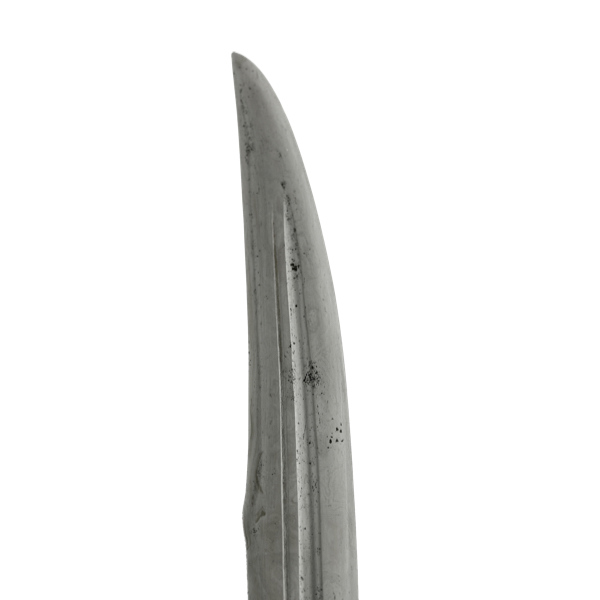
Yútóudāo (魚頭刀)
A subtype of Chinese sabers with a peaked spine.
Pèidāo (佩刀)
Literally "waist-worn-saber".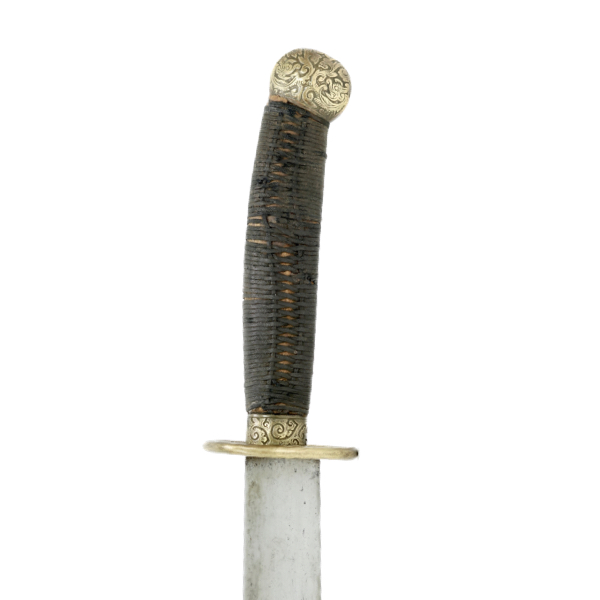
Large Southern Chinese saber
Built around a beautifully forged blade, in full polish, revealing a burl grain pattern.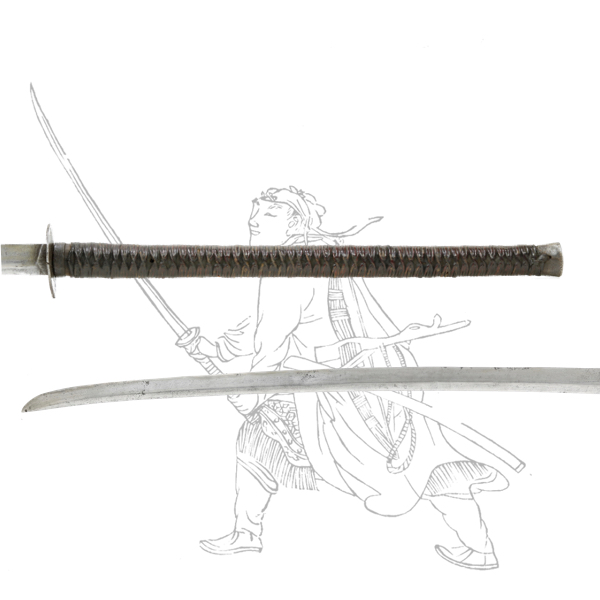
An antique chángdāo
Its large blade is of ridged cross-section, inspired by the Japanese design.
Markings on Chinese swords
Most markings are found on military edged weapons, usually in the form of serial numbers and characters denoting a place or unit.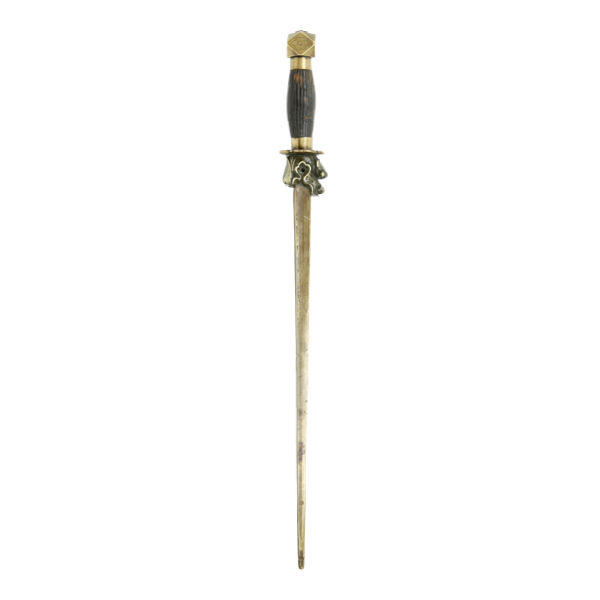
Jiǎn (鐧)
A type of Chinese mace with a smooth rod.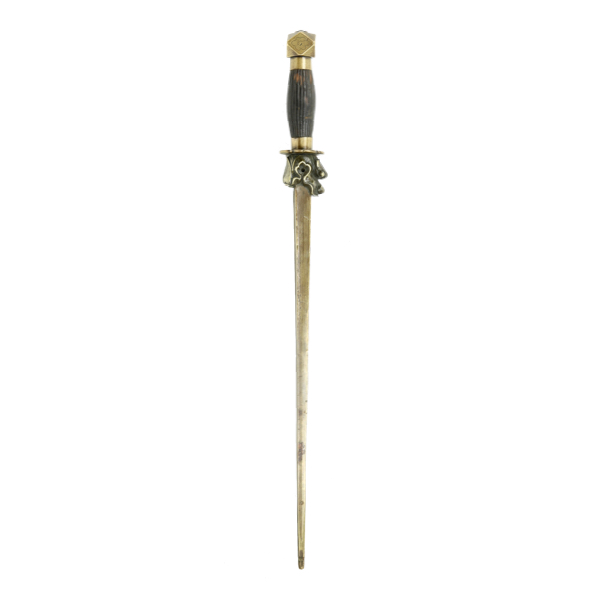
Chinese bronze mace (tóngjiǎn)
With large dragon head collar piece.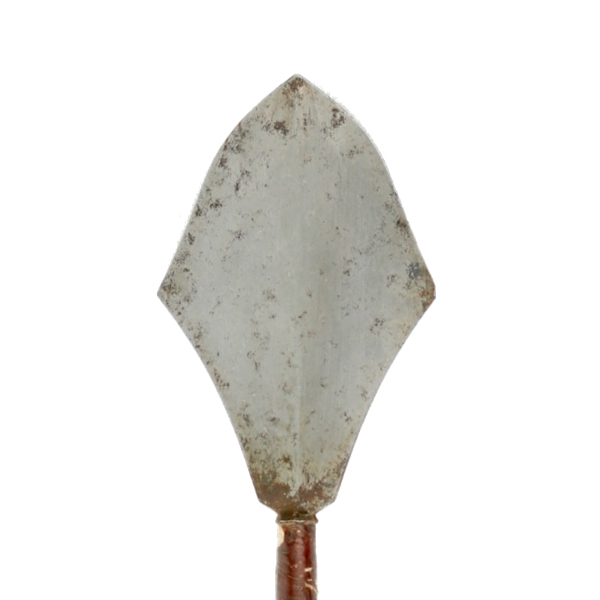
Pī jiàn (鈚箭)
Chinese name for a class of broadhead arrows. (Alternative spelling using an archaic character).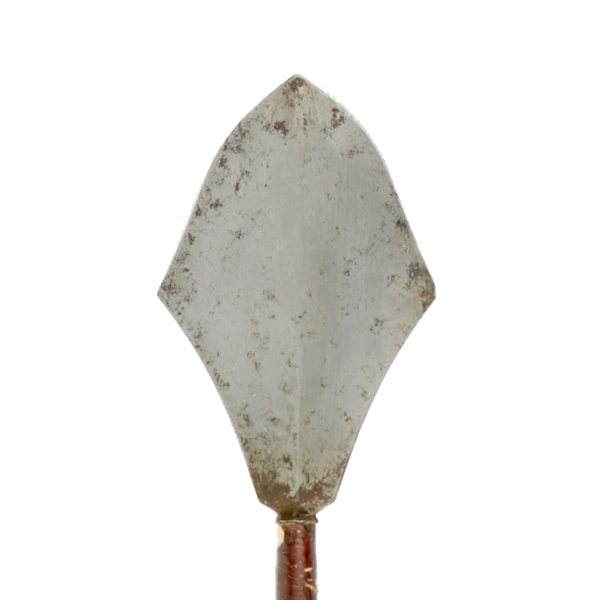
Pī jiàn (披箭)
Chinese name for a class of broadhead arrows.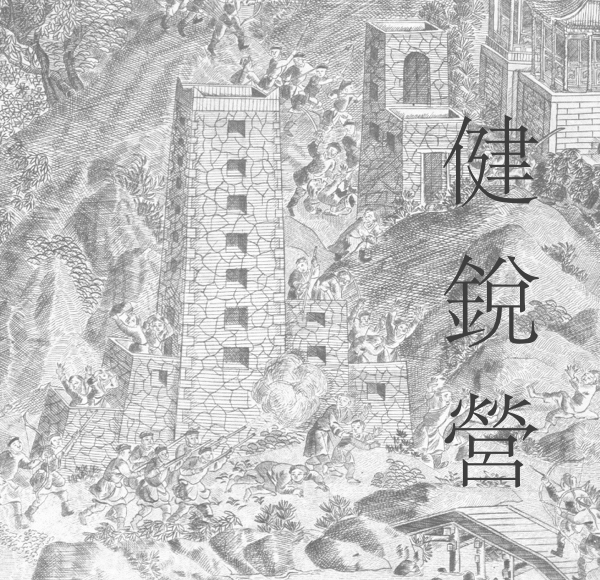
Silin dacungga kūwaran
An elite light unit under the Qing dynasty Eight Banners.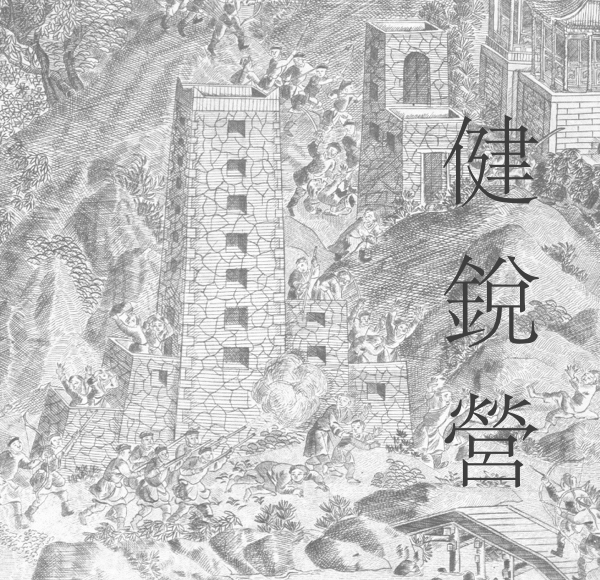
Jiànruìyíng (健銳營)
An elite unit under the Qing dynasty Eight Banners, comparable to today's special forces.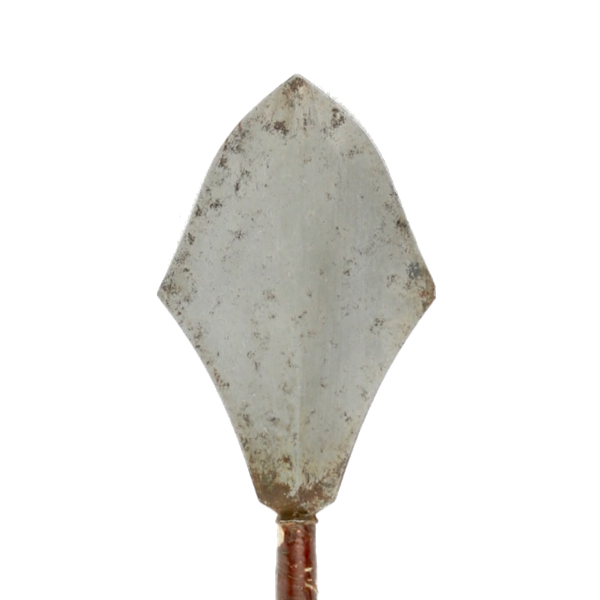
Niru
Manchu word for a class of broadhead arrows, a military "company", or captain.
A rare Qing bow
With translucent horn bellies glued on red pigment.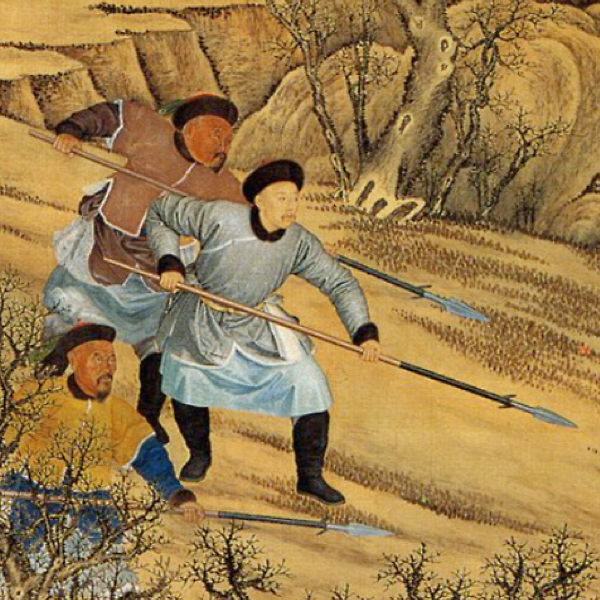
Hǔqiāngyíng(虎槍營)
An elite unit of Qing imperial guardsmen that accompanied the emperor into dangerous hunting grounds.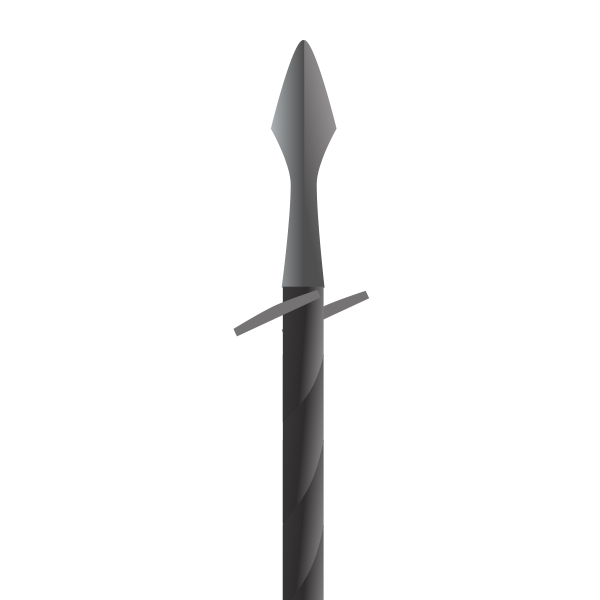
Tiger spear (Qing)
The "tiger spear" was a large hunting spear in use by the Qing dynasty Tiger spear division.

Hǔqiāng(虎槍)
A large hunting spear in use by the Qing dynasty Tiger spear division.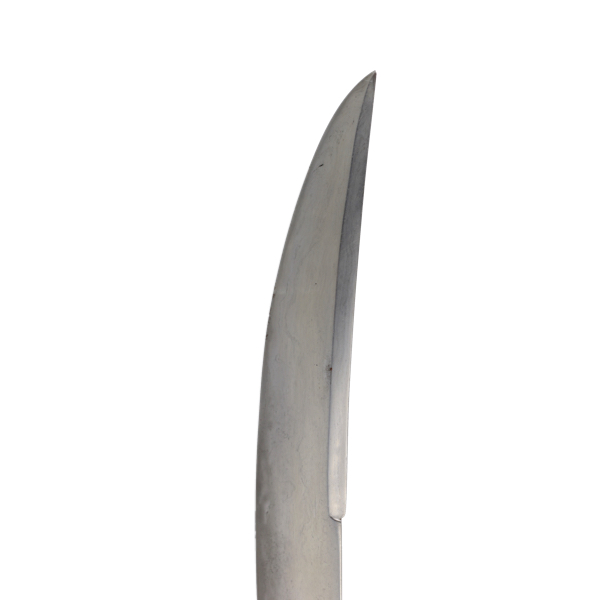
Yànlíngdāo (雁翎刀)
A Chinese saber type that translates as "goose-feather saber".
Yànchìdāo (雁翅刀)
Chinese saber type with a gently curved blade and clipped tip.
Liǔyèdāo (柳葉刀)
A Chinese saber with a gentle curve.
Yànmáodāo (雁毛刀)
A Chinese saber type with a mainly straight blade that curves up at the tip. It literally means "goose-quill-saber".
Dāndāo (單刀)
Literally "single saber", it refers to any type of dāo used solely without shield or weapon in the other hand.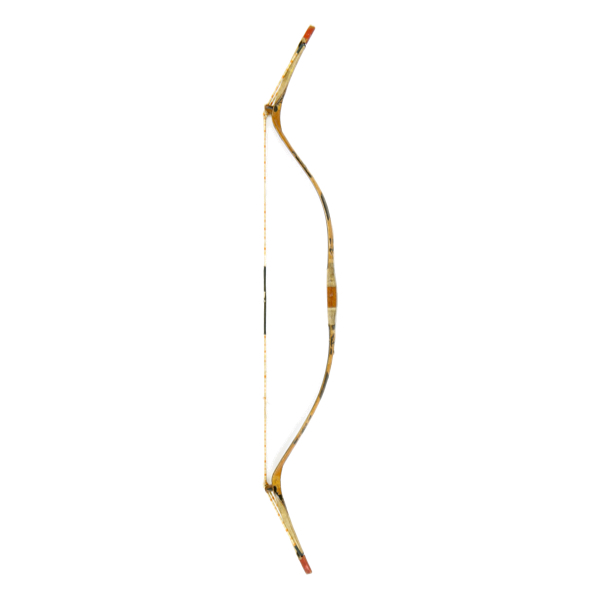
Beri
Manchu word for "bow".
Huāwéngāng (花文鋼)
A type of pattern welding known in English as twist-core.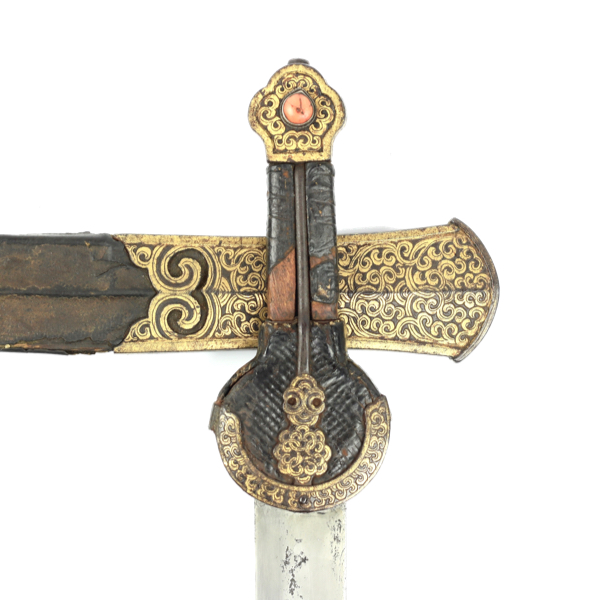
A rare Jinchuan sword
A royal sword, probably from the Wasi kingdom in present-day Sichuan province.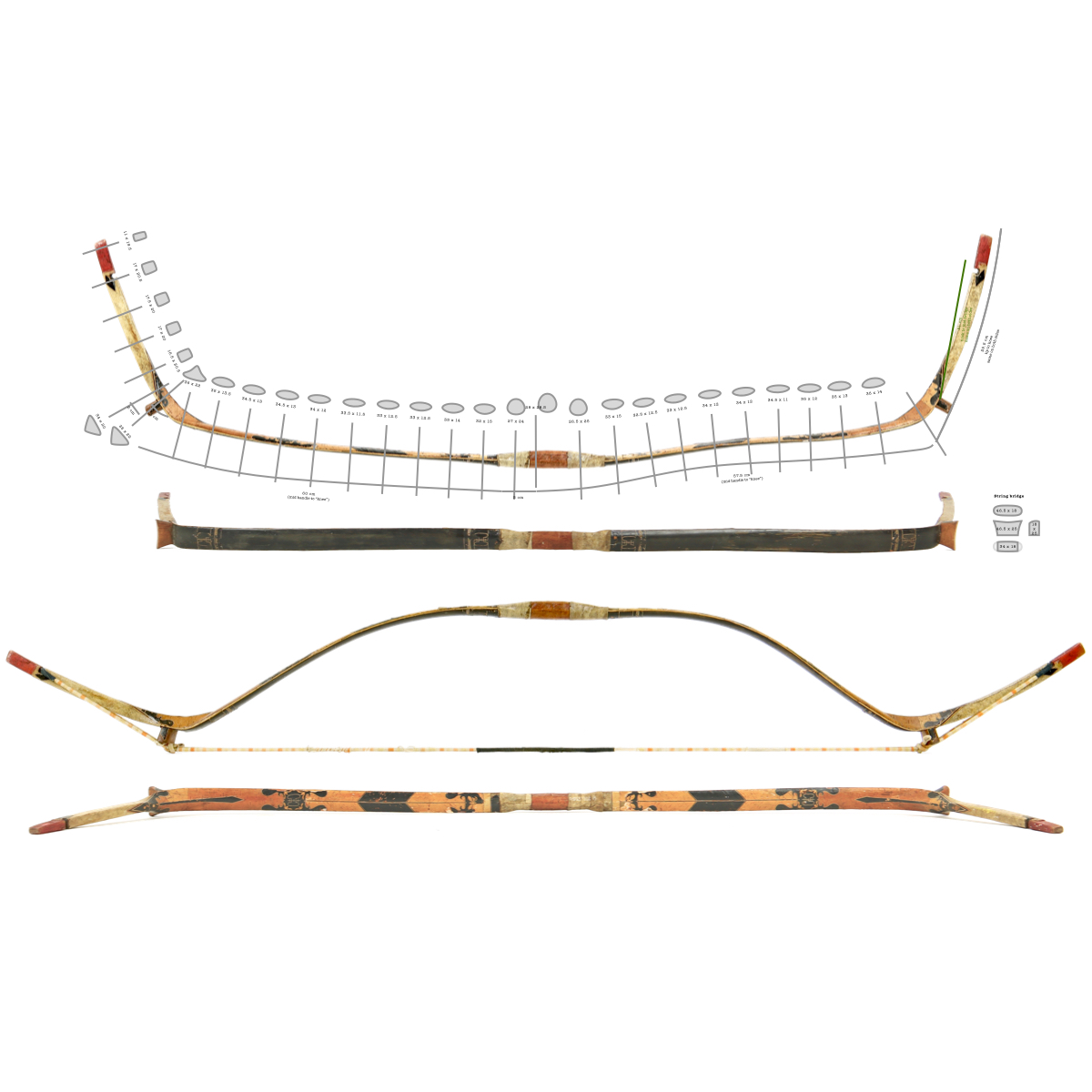
Measurements of a Manchu bow
Made in the famous Changxing workshop in Chengdu, which as the subject of Tan Danjiong's (T'an Tan-Chiung) "Investigative Report on Bow and Arrow Manufacture in Chengdu"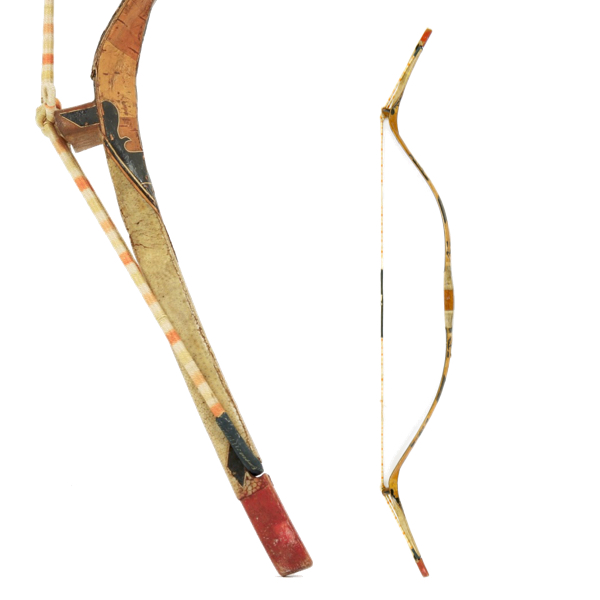
A Chinese bow by Changxing
Rare extant work of a famous workshop in Chengdu.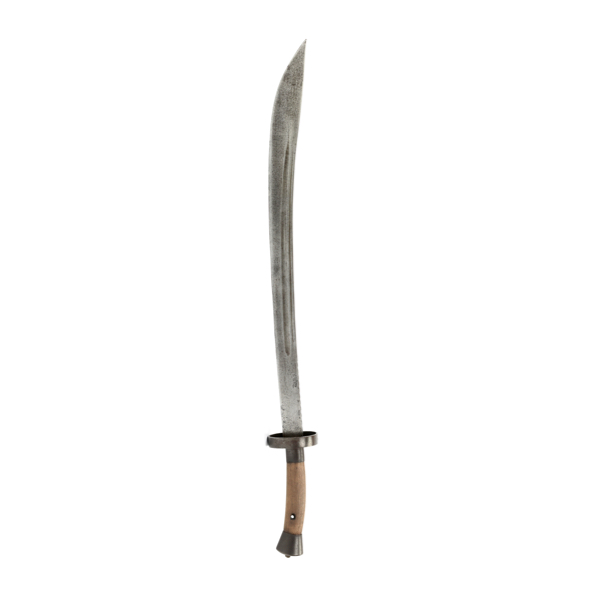
Niúwěidāo (牛尾刀)
A late form of Chinese saber with a pronounced widening at the tip.
Glossary of Chinese saber terminology
An overview of Chinese saber terminology as found in Chinese texts.
